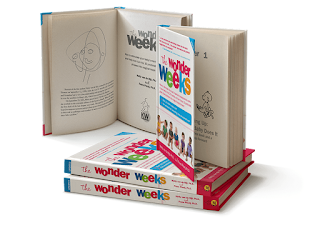Challenge Day #24
The Wonder Weeks
Perceptual Control Theory (PCT) purports that we are made up
of a hierarchy of negative feedback loops.
The higher levels are made up of differing combinations of lower levels. Over time this hierarchy becomes more and more complex. As an educator I have always been fascinated by the hierarchy and in particular
how it is formed and how it relates to learning. One of the best explanations
of the formation of the hierarchy comes from Hetty van de Rijt, and Frans
Plooij, in their book The Wonder Weeks.
Because I used the word hierarchy I want to specify that I’m
meaning a complex dynamic network much like the images you have seen depicting
neural networks or branching rather than a ladder. Although we are born
with part of the hierarchy in place most of it grows as we grow. Rijt and Plooij Dutch researchers, conducted studies
on when we first acquire perception on each level. Their research suggest that by 75 weeks old
an infant has developed some references in each of the eleven levels.
Rijt and Plooij share the timing of each
of the levels, beginning with sensation at birth, patterns at weeks 7-9,
transition (changes in movement become smooth) at weeks 11-12, events
(including prediction), relationship (like distance) comes around week 22-26, next
is category (grouping - names), then at week 40- 43 sequences, and then
programs (more than one way to perform a sequence) between weeks 43-49, from
weeks 60-64 principles which are generalizations and complex predictions and
finally systems level concepts like a sense of self and beliefs around weeks 70-75. This does not mean that a child has the language to talk about these levels or can articulate something at any level but more and more abilities to control the environment around them.
Because the hierarchy is built from lower levels to higher levels
learning can be more easily facilitated by helping learners make connection moving
up the levels; for example in music
moving from pitch to chords, to scale and tempo and so forth up the
hierarchy. As an educator this helped me understand the value in having learners experience first and then label the learning. It also helped me understand that if there is a lower level perception that is not present the student may struggle to build the next higher level.
In the Wonder Weeks Hetty and Frans write about the
acquisition of each successful level being proceeded by a fussy phase. Crying, crankiness and clinging are
indicators that a new level is ready to emerge.
I have found the same to be true for adults who are experiencing a major
shift they can become cranky, cling, and often emotional. Unlike children who physically cling, adults
usually cling to ideas or places. As a change agent I've found this reassuring because often I've met people who hold tightly to an old idea and then suddenly they shift.
I have given this book as a baby shower gift to everyone
since I first read it. I’m thrilled that
there is now an app for your phone and I love this very practical application
of PCT.




Comments
Post a Comment